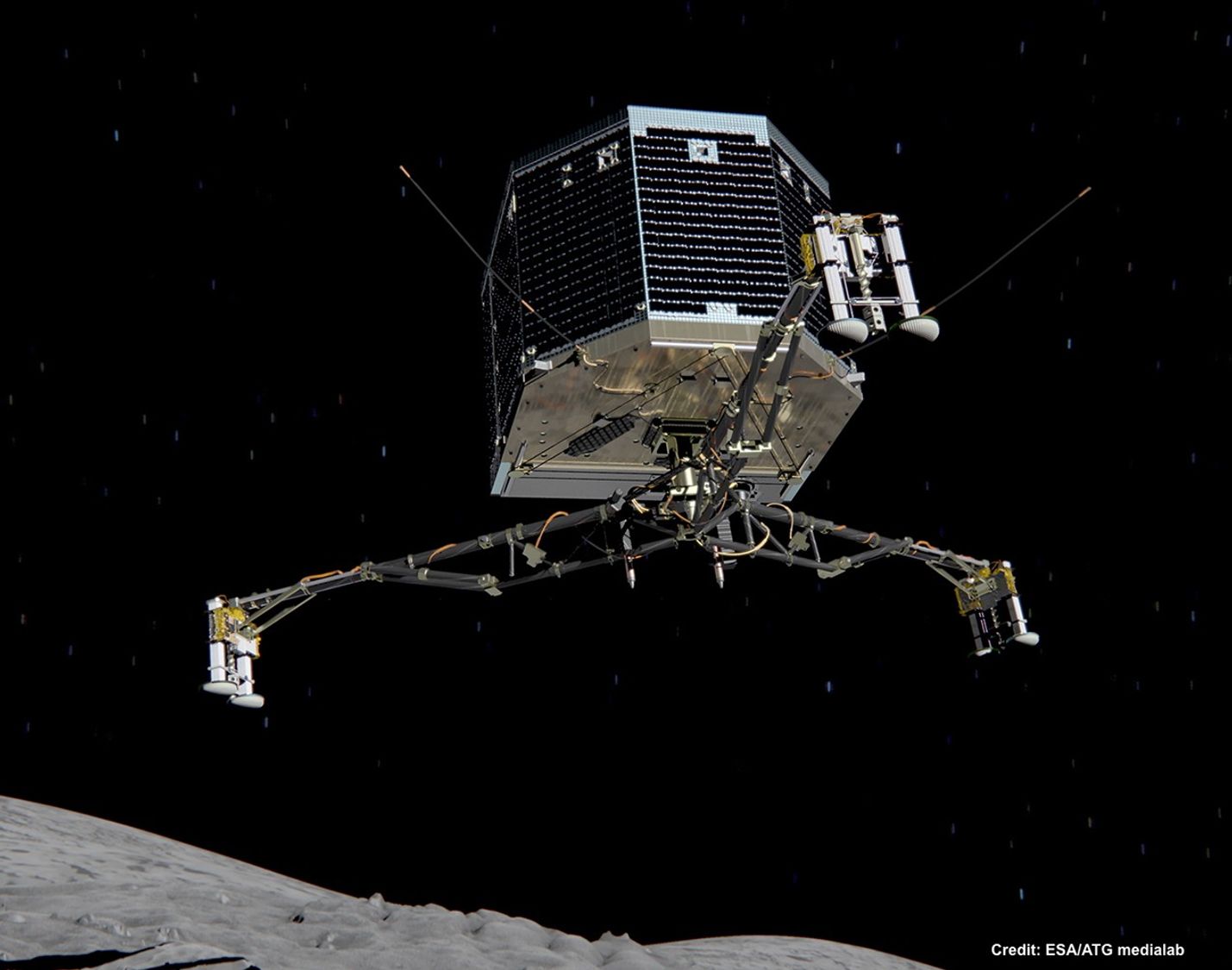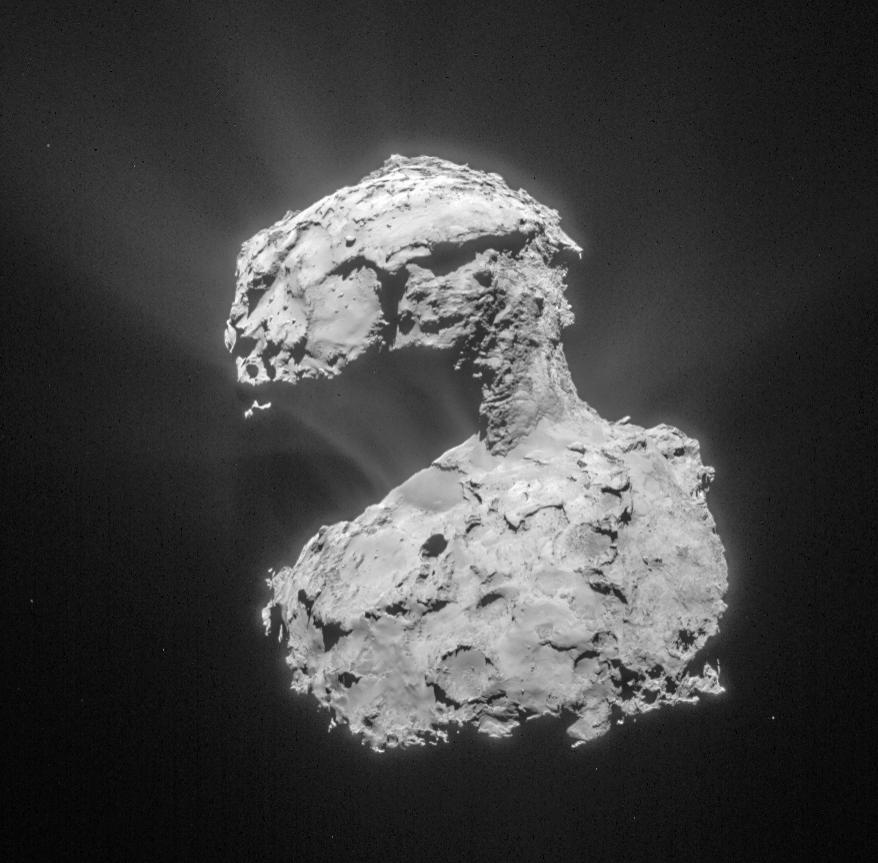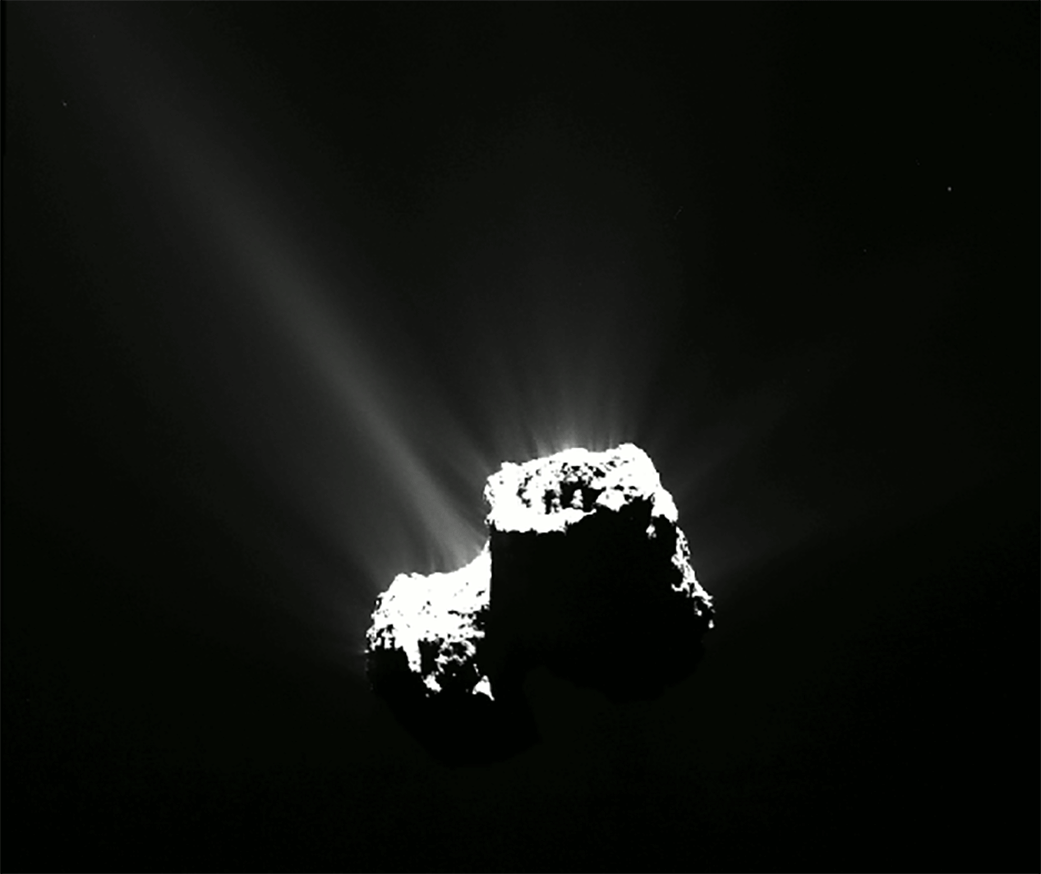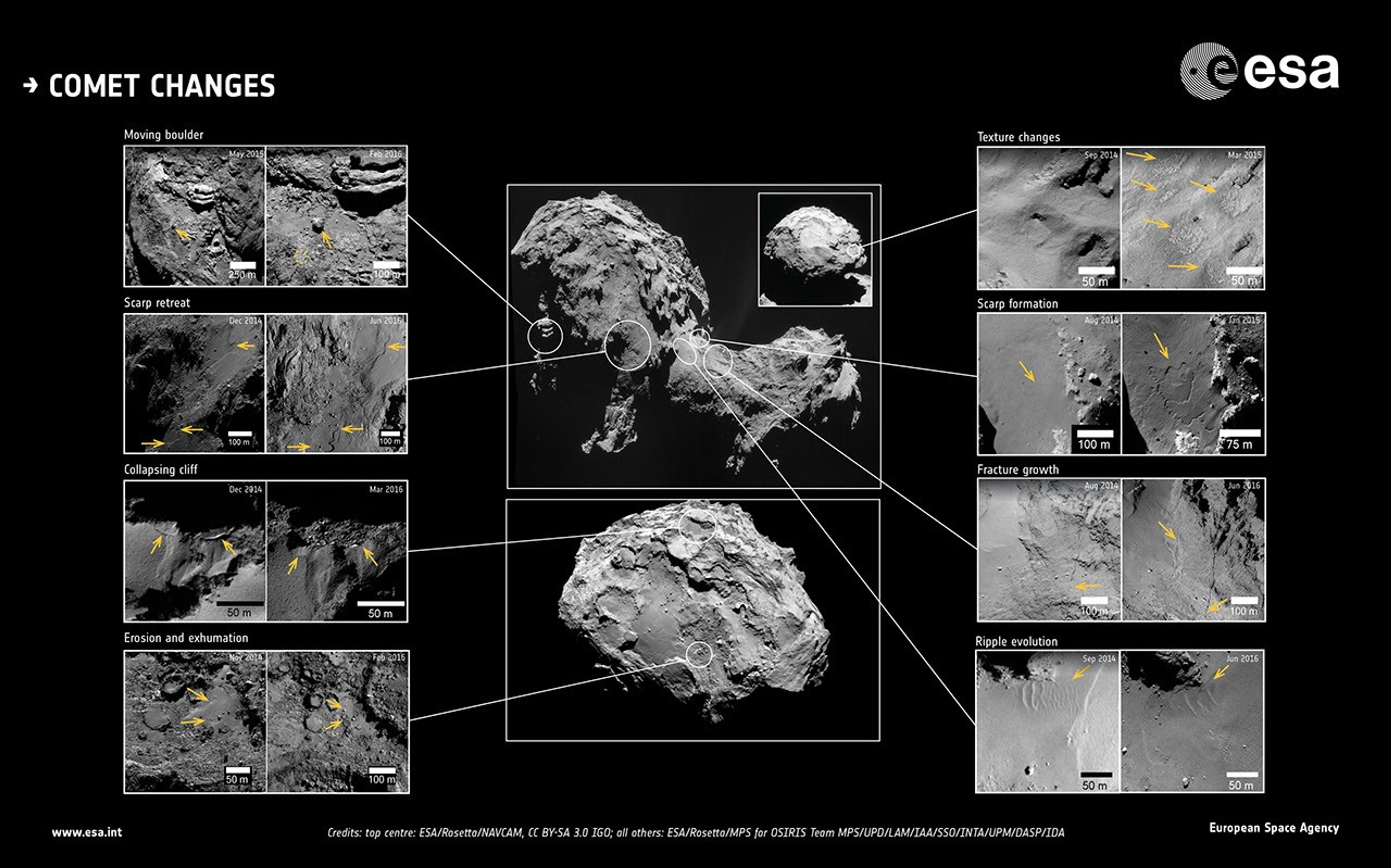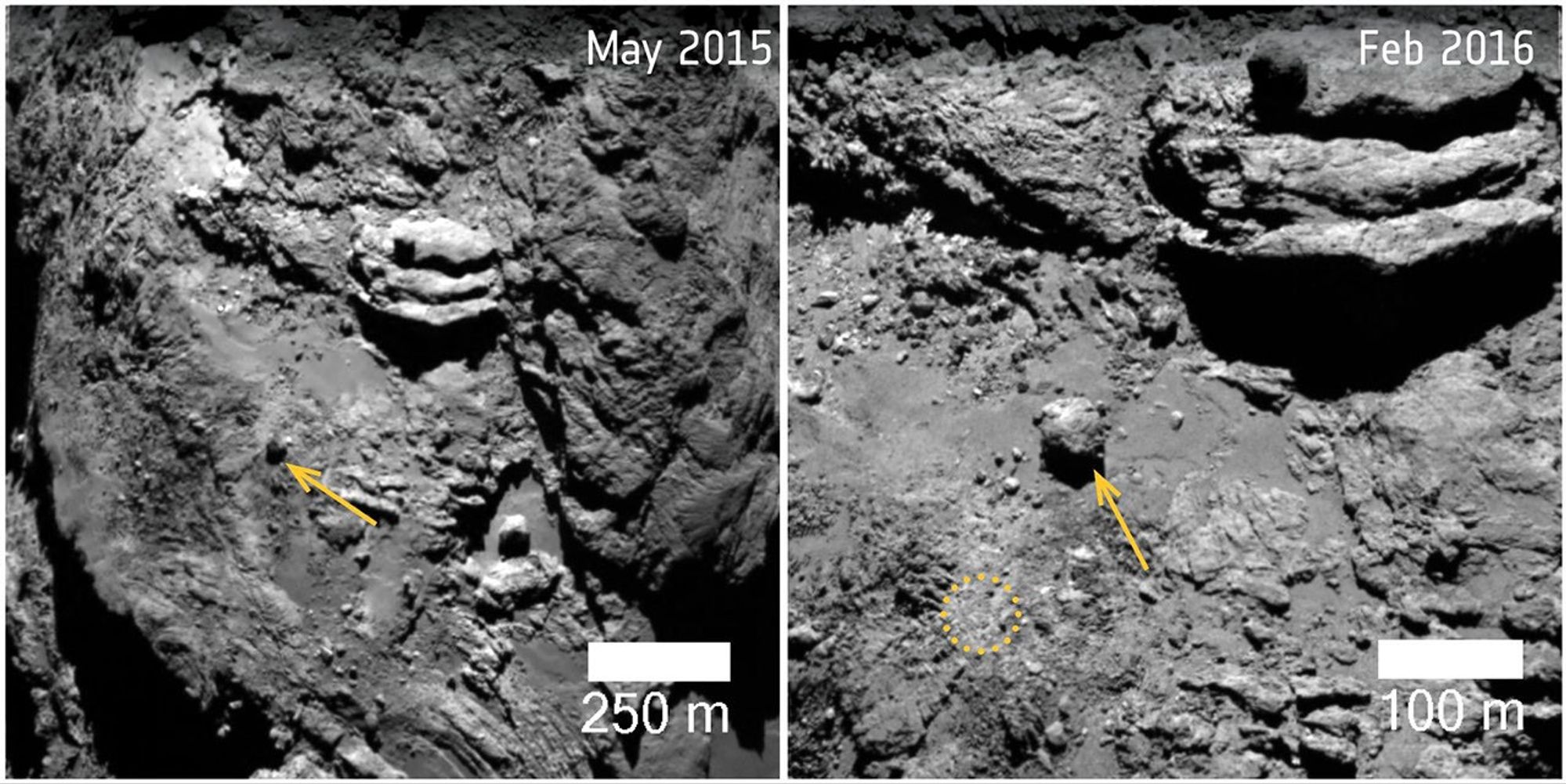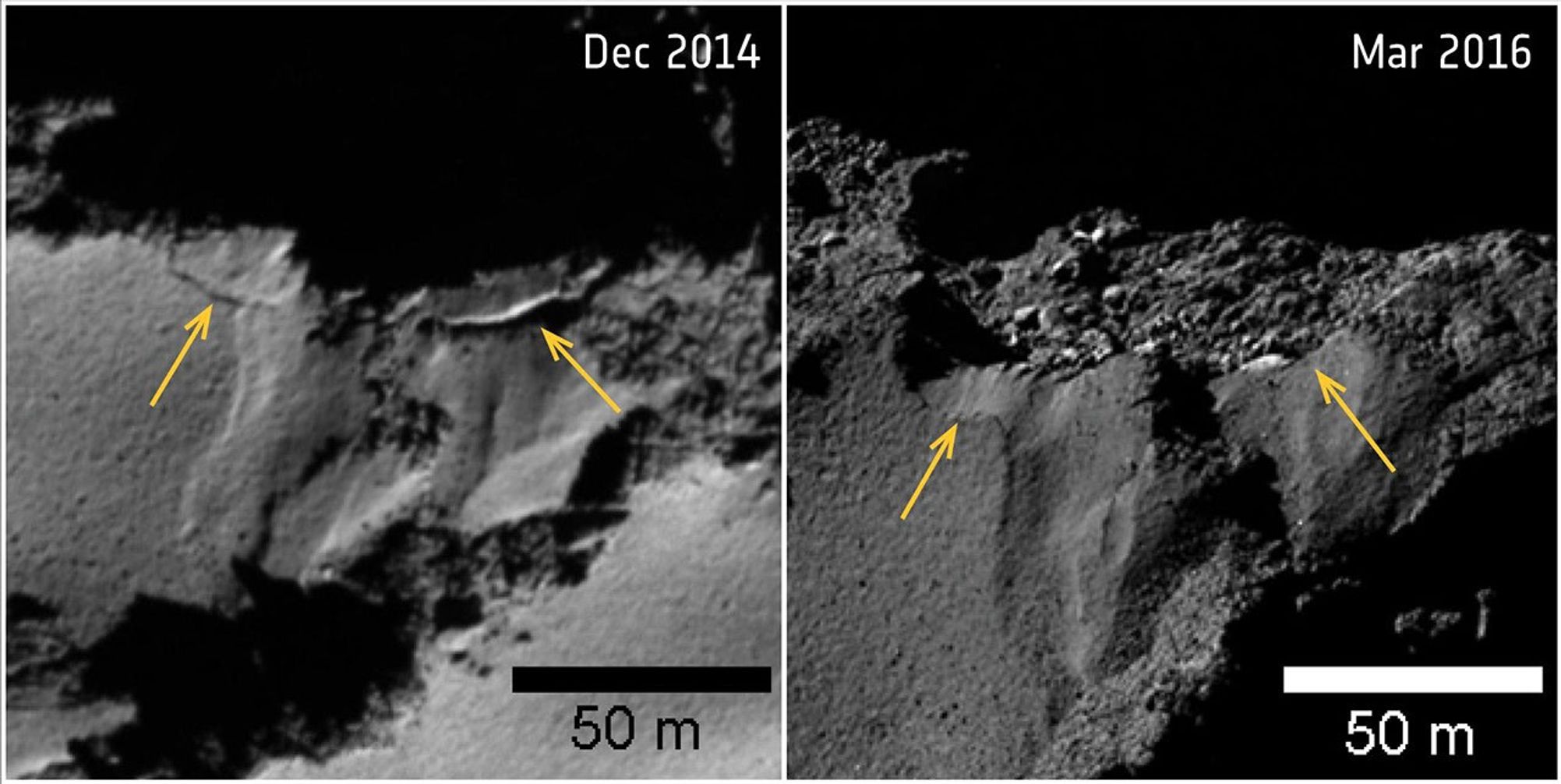Rosetta-Philae
Type
Orbiter, Lander
Launch
March 2, 2004
Target
Comet 67P/Churyumov-Gerasimenko
Objective
Comet Orbit and Landing
Goals
The European Space Agency's Rosetta was the first mission designed to orbit and land on a comet. It consisted of an orbiter and a lander – called Philae. The two spacecraft carried 20 sciences instruments to make a detailed study of comet 67P/Churyumov-Gerasimenko for two years as it orbited around our Sun.
Accomplishments
In August 2014, Rosetta became the first spacecraft to orbit a comet when it joined comet 67P/Churyumov-Gerasimenko on it's journey around the Sun. On Nov. 12, 2014, Rosetta scored another historic first when its Philae probe successfully landed on the surface of the comet and began sending back images and data.
The mission ended with a successful controlled impact on the comet on Sept. 30, 2016.



























